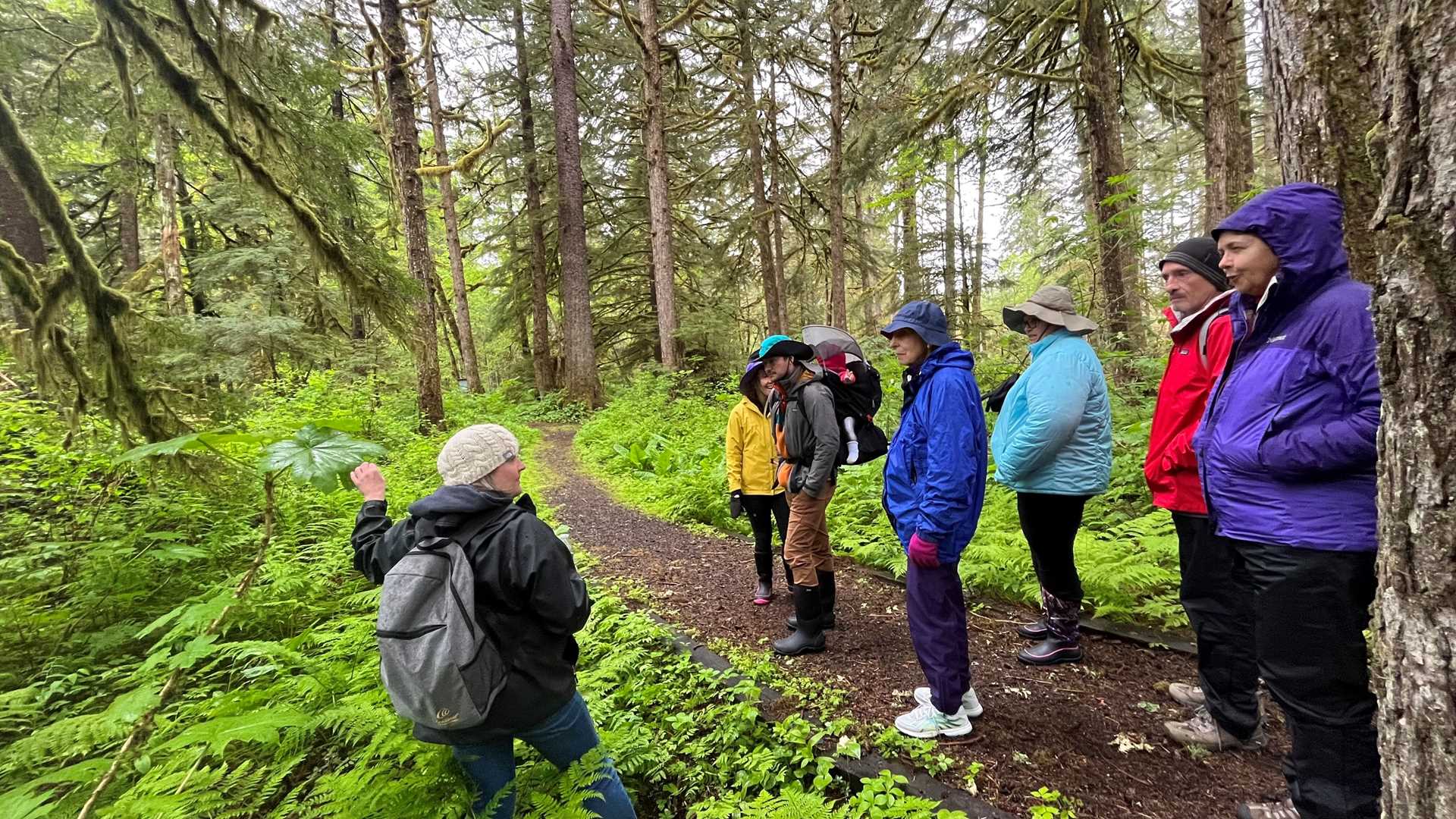The town of Petersburg is at the north end of Mitkof Island. It is positioned due to its proximity to LeConte Glacier, which regularly provides the fishing village with consistent sources of calved ice for preserving the fish and crabs caught in the region. We approached the town by way of Frederick Sound and docked around breakfast. Petersburg is often referred to as “the town that fish built” because of its history. Today, the town hosts more modern commercial fishing operations with fish processing facilities and docks that are home to a myriad of different fishing boats.
The weather that greeted us was expected Southeast Alaskan fare: overcast and drizzly. Gulls wheeled around the harbor busily, and Steller sea lions loafed around channel markers. At the docks, Alaskans wearing waders and Xtratuf boots tended to their boats and gear, seemingly unbothered by the weather.
Following breakfast, operations began, and Zodiacs zipped off to nearby Kupreanof Island. At the dock, other guests dispersed to explore Mitkof Island and Petersburg. Passengers, staff, and crew were encouraged to explore on guided excursions or on their own. Guests had free reign to walk into town, and many visited historic buildings, bookstores, shops, and more.
Others embarked on bicycle trips led by naturalists. The bike tour traversed downtown Petersburg and much of the waterfront. En route, guests saw resting bald eagles, totem poles, croaking ravens, and classic Southeast Alaskan homes with children playing and flower gardens bursting with color.
There were also opportunities for guests interested in learning about the natural or cultural history. One such opportunity was with our partners, Haa Aaani Adventures. Haa Aaani is owned and operated by local Tlingit guides who share their local knowledge, wisdom, customs, and stories. From them, our staff and passengers were able to learn more about the people who have lived off the land here for thousands of years.
Another unique excursion in Petersburg is our trip to the muskegs. Muskegs are bogs that are both acidic and packed with sphagnum moss and peat. In muskegs, the water table sits at the surface. The combination of these features creates the conditions for a plant community that is very unlike that of the temperate rainforest structure that we have come to know more intimately during the voyage. In the muskeg, many of us were introduced to the carnivorous sundew, a diminutive plant that feeds on insects. Guests also observed rufous hummingbirds, Steller’s jays, and Sitka black-tailed deer.
Back on the ship in the evening, we convened for our traditional cocktail and a recap by the naturalists. We swapped stories and anecdotes from the day. At this point of the trip, many of us have gotten to know our fellow shipmates. We are no longer complete strangers, and talkative groups shared jokes and observations from the day. During recap, a number of naturalists spoke about the area’s natural history. Steve broke down how the sundew, a tiny carnivorous plant, is able to attract, capture, and digest its insect prey. The dive team duo, Jesse and Kayvon, played a video from a recent dive and streamed a live feed of larval crabs from the library microscope to the lounge televisions. Adam, one of our naturalists who studies whale and porpoise populations, gave a wonderful and funny workshop on the different types of boats that are used for fishing and exploring in Alaska. And, of course, expedition leader Jill was sure to give us all a preview of the next day’s adventure.
And as is tradition at Petersburg, the kitchen and dining staff worked diligently to prepare a crab feast. We protected our laps with our napkins and began cracking the shells and legs of Dungeness crabs. Afterwards, beloved naturalist Steve presented on fisheries in Alaska. With experience fishing and angling in Alaskan water and a gift for storytelling, Steve captivated the group before we departed for our cabins.







